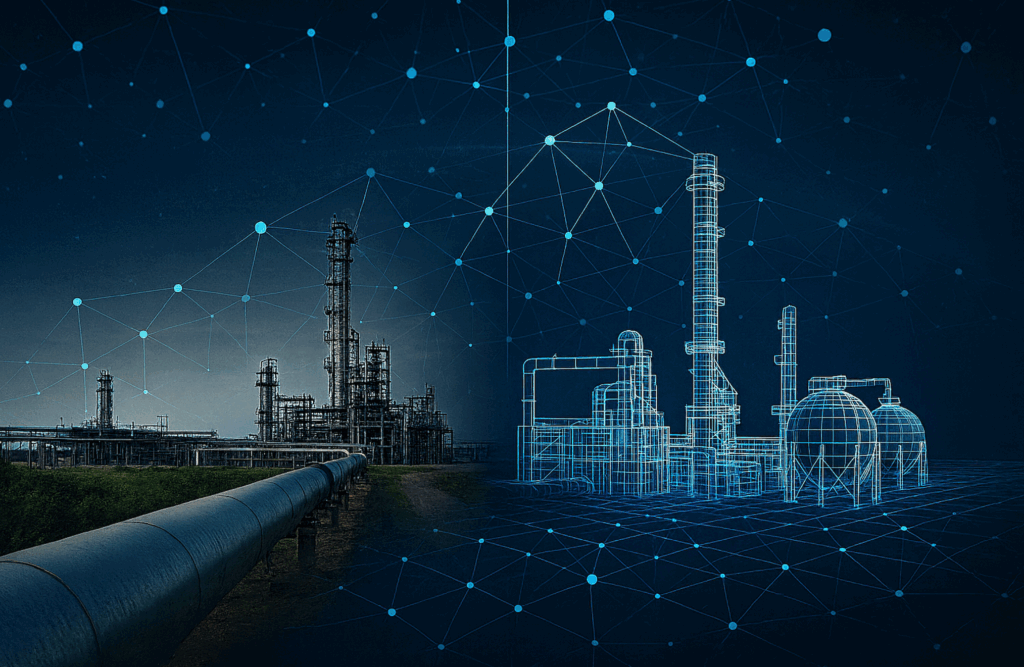
The global energy sector is at a turning point where emissions transparency is no longer of secondary concern, but a central driver of competitive commercial advantage and operational integrity. The core challenge for operators is not a lack of commitment, but the absence of trustworthy, well-integrated and real-time data. Today’s energy supply chain relies upon a patchwork of fragmented systems and static emissions factors, yielding estimates that fall short of compliance and market demands.
A new generation of emissions intelligence is emerging to solve this problem. By integrating data of all forms – from satellite imagery to high-frequency data, then combining it with advanced analytics leveraging knowledge engineering and advanced AI, operators can achieve a near real-time view of their emissions across the entire supply chain. This transition from outdated estimates to verifiable, evidence-based quantification unlocks potential for both compliance and commercial objectives.
What’s at stake is more than reporting. It’s about reshaping how emissions are understood, managed, and valued across the energy ecosystem.
The primary catalyst is commercial value. In a carbon-conscious market, trusted emissions data becomes a powerful differentiator. When emissions intensity can be traced and verified to individual cargoes and across full supply chains with high fidelity, it enables product certification, premium pricing, and deeper customer engagement. It can also help identify operational efficiencies and simplify regulatory reporting.
For example, a major operator faced persistent challenges with data quality, integration, and emissions reporting. By taking a new approach to data integration and analytics, not only did the operator automate Oil and Gas Methane Partnership (OGMP) reporting, but it also introduced new products to the market, backed by that same core data.
This approach is powered by a disciplined application of artificial intelligence. AI’s role is to enhance human expertise by creating “semantic digital twins”– dynamic virtual replicas of physical assets that serve as a trusted foundation for emissions quantification. Captured in a scalable knowledge graph, these models drive auditable analytics that help operators monitor emissions, and streamline compliance with frameworks such as the EPA Greenhouse Gas Reporting Program (GHGRP) and the Oil and Gas Methane Partnership (OGMP), and introduce the market to verifiable data-backed differentiated commodities, all with increased accuracy, context, and trust.
Ultimately, what’s at stake is more than reporting. It’s about reshaping how emissions are understood, managed, and valued across the energy ecosystem. By making emissions data precise and actionable, the energy sector can take a decisive step toward true carbon accountability. As the energy transition accelerates, companies that lead in adopting this new standard for accountability and transparency will define the next era of climate-aligned energy production, turning a regulatory necessity into a strategic asset.
This article was adapted from a technical paper and presentation on Digital Twins by Gavin Nicol, Chief Technology Officer at Context Labs, delivered at Gastech 2025 in Milan.
Related
Nov 13, 2025
Resource: Differentiated Gas and the Chain of Custody
A Comparative Analysis of “Trace and Claim” and “Book and Claim” for Natural Gas Emissions Intensity. The widespread adoption of LNG transformed natural gas into a global commodity subject to […]
Sep 10, 2025
Experience the Future of Carbon Management with Context Labs, Microsoft, and Williams
Watch the replay of the webinar with Context Labs Chief Operating Officer Nathan Brawn, Williams Vice President Environmental, Regulatory & Permitting Mark Gebbia, and Microsoft Managing Director Bill Robertson.